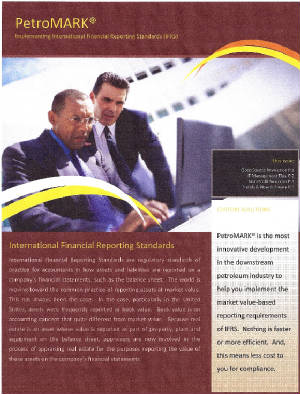IAS 16 – Property, Plant and Equipment
This section
applies to all properties “…that are held by an enterprise for use in the production or supply of goods and services,
for rental to others, or for administrative purpose and that are expected to used during more than one period.”
AAA GAAP in the US has historically reported
real estate value in financial reports at historical cost less accumulated depreciation. This is known as the “Benchmark
Treatment”. IFRS allows the value of real estate to be reported at fair market value, which is known as the “Allowed
Alternative Treatment”. The principle of the Allowed Alternative Treatment is “true and fair view” and represents
a mark-to-market approach. The property “... should be carried at a revalued amount, being its fair value […]
less any subsequent accumulated depreciation […] impairment losses.” AAA
To keep this value up-to-date a “sufficient
regularity” of revaluations is required. Any gains or losses through revaluation adjustments have generally no direct
impact on the income statement as long as it is possible to show them directly in the stockholder’s equity.
AAA
IAS 16.34 prohibits the revaluation of a single property by requiring the company to use the
same measurement methods within an asset class.
AAA The new 2005 version of the standards will further require a separate depreciation calculation for
each part of the property with a significant share of the total costs. This will lead to separate depreciation and cost measurements
for the main property parts, such as land, structure, HVAC, fuel service, and site improvements. AAA
IAS 16 and IAS 40 require a detailed disclosure of the used valuation methods and their underlying
assumptions. AAA
The current version of IFRS states the “the fair
value of land and buildings is usually its market value” It is determined by an “appraisal normally undertaken
by professional qualified valuers” (IAS 16.30) and represents the “amount for which an asset could be exchanged
between knowledgeable, willing parties in an arm’s length transaction (IAS 16.6). AAA
The IVS characterizes market value as ”the estimated amount for which a property should
exchange on the date of valuation between a willing buyer and a willing seller in an arm’s length transaction after
property marketing wherein the parties had each acted knowledgeably, prudently, and without compulsion”. The comparison
of the characteristics of market value and fair value shows that the recent version of the IFRS and the IVA have very similar
approaches. AAA The revised standards now support the value of the highest and
best use of all possible uses. This concept dropped the previous “market value for the existing use” and brought
IFRS closer to the USPAP in the U.S. AAA The impairment test is “value in use”.
This value is a non-market assessment and equals the present value of the estimated future cash flows including the property’s
disposal. AAA According the IFRS, the “best evidence of fair
value is normally given by current prices in an active market for similar property” (IAS 40.39). In the U.S. this is
referred to as the sales comparison approach. In the absence of current prices in an active market, the IFRS give three alternatives:
(1) to adjust the current prices of differing properties to reflect these differences. (2) to adjust the recent prices of
similar properties to reflect economic change or (3) to use discounted cash flow projections. | 



